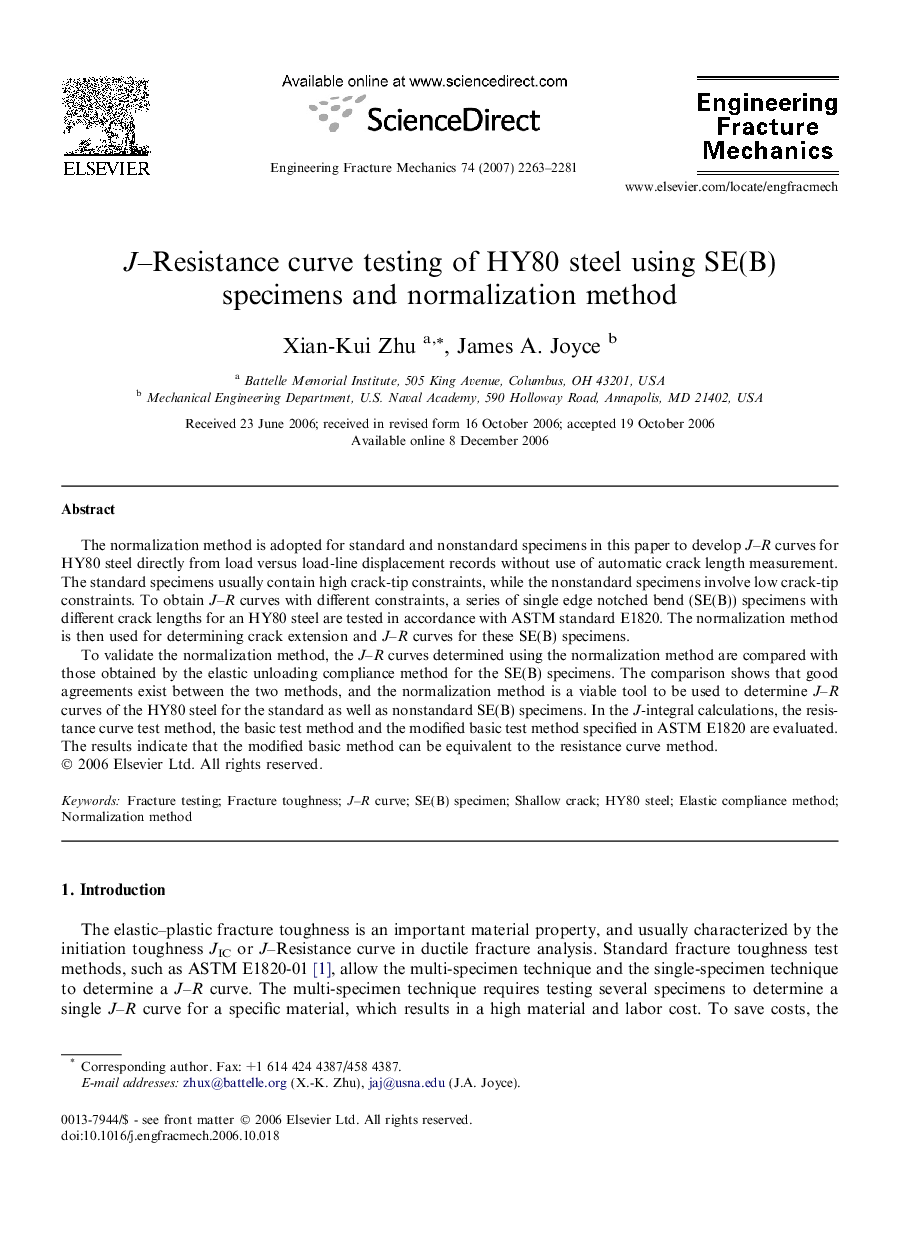| Article ID | Journal | Published Year | Pages | File Type |
|---|---|---|---|---|
| 768078 | Engineering Fracture Mechanics | 2007 | 19 Pages |
The normalization method is adopted for standard and nonstandard specimens in this paper to develop J–R curves for HY80 steel directly from load versus load-line displacement records without use of automatic crack length measurement. The standard specimens usually contain high crack-tip constraints, while the nonstandard specimens involve low crack-tip constraints. To obtain J–R curves with different constraints, a series of single edge notched bend (SE(B)) specimens with different crack lengths for an HY80 steel are tested in accordance with ASTM standard E1820. The normalization method is then used for determining crack extension and J–R curves for these SE(B) specimens.To validate the normalization method, the J–R curves determined using the normalization method are compared with those obtained by the elastic unloading compliance method for the SE(B) specimens. The comparison shows that good agreements exist between the two methods, and the normalization method is a viable tool to be used to determine J–R curves of the HY80 steel for the standard as well as nonstandard SE(B) specimens. In the J-integral calculations, the resistance curve test method, the basic test method and the modified basic test method specified in ASTM E1820 are evaluated. The results indicate that the modified basic method can be equivalent to the resistance curve method.
